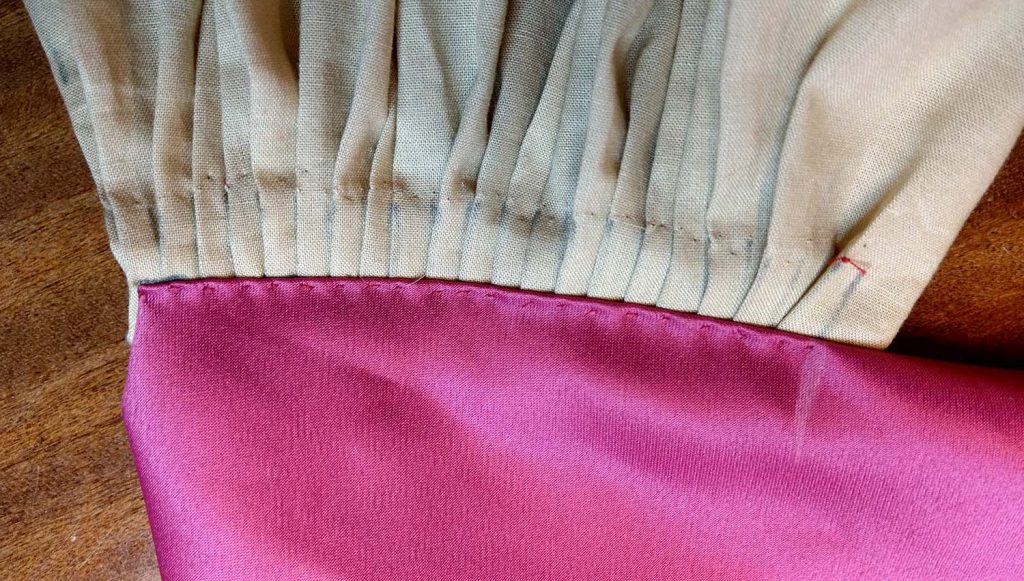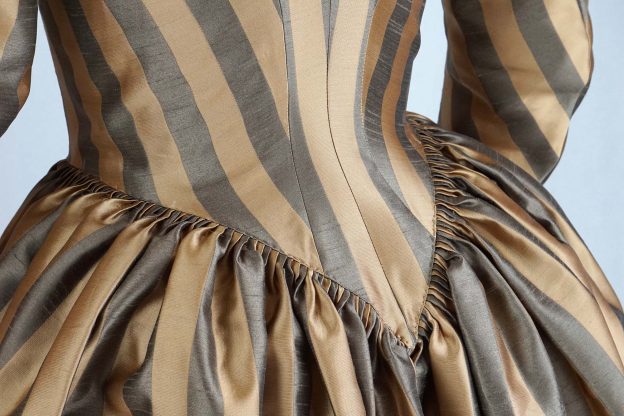For small folds (minimum ¼” (5mm)), measure the distance of the waistband or bodice section, where you want to attach the skirt.
Let´s say 35cm for an 18th century robe a l´Anglaise. Determine the width of folds and therefore the number of folds – with a width of 5mm there would be 70 folds each side (that makes a total of 140! folds).
Measure along the top edge of the skirt, from center back to the front edge, subtract about 1” from this measurement (e.g. 138cm-2cm=136cm). Divide this measurement by the number of folds (136cm/70=1,9cm). This is how much fabric each folds contains. Transfer that measurements to the wrong side of the top edge of the skirt. Mark the fold´s width (5mm) beside. As a rule, the skirt width has to be minimum three times the distance at the bodice/waistband.
In this sample I wanted to gather 45cm into 10cm, with pleats of 5mm. That means I divided 45cm by 20, that is 2,25cm for each fold. On the picture above I marked this 2,25cm at the wrong fabric side along the top edge. On the picture below, I marked the fold´s width of 5mm beside.
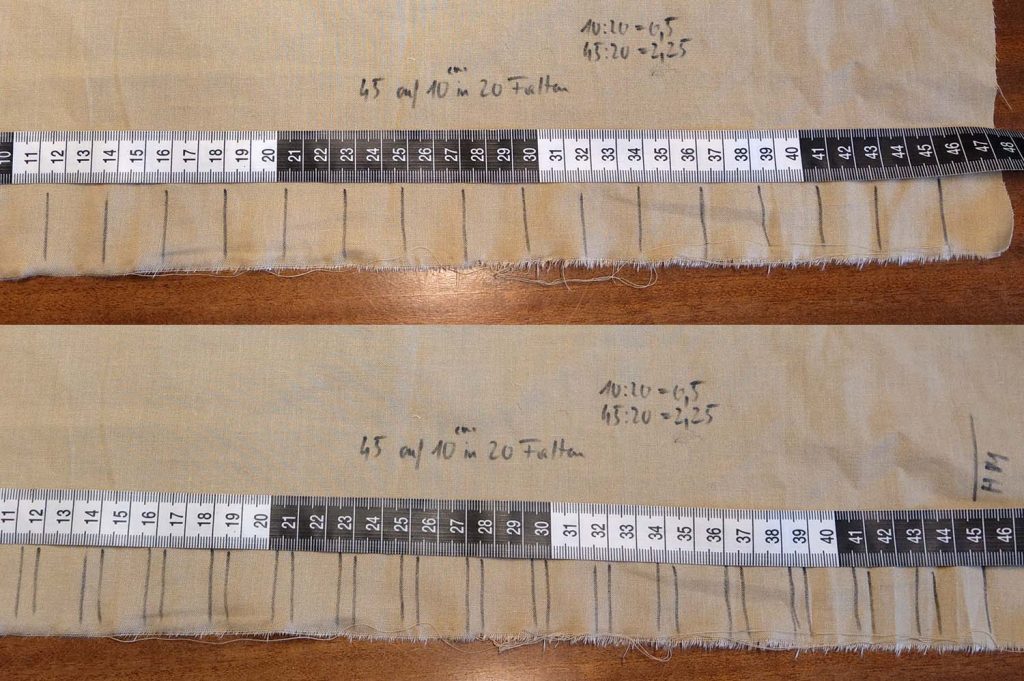
Sew two rows of gathering stitches with a thicker thread on both sides of the seamline. Above you see the wrong side, below the right fabric side of the skirt with the gathering threads already stitched.
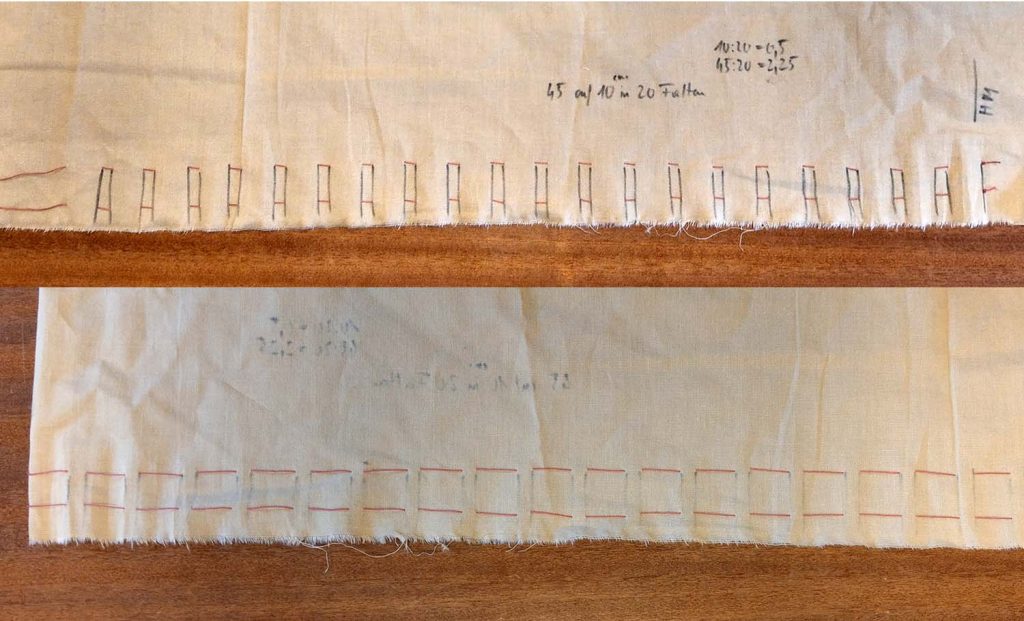
Place the skirt on top of your working table with the right side up and pull the gathering threads to pleat the folds.
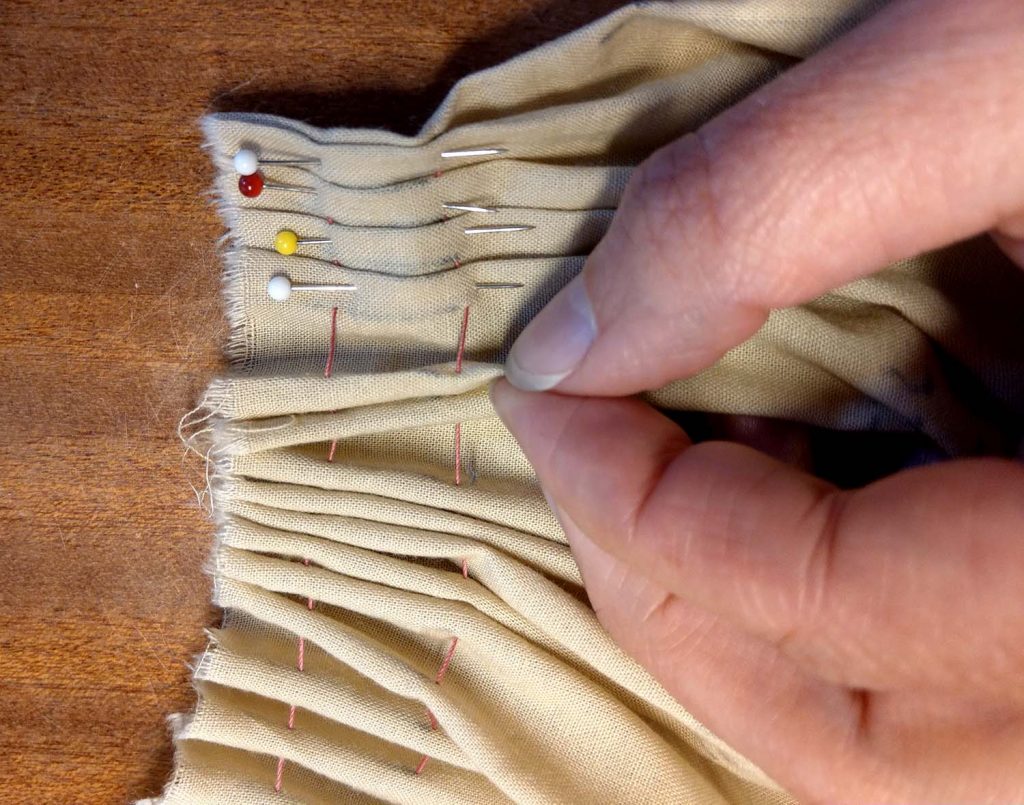
Pin in place every single fold. Re-measure your folds, if you plan fold with a width of 5mm, you must place 20 folds within 10cm. If you don´t have enough pins, make two rows of basting beside the gathering threads.
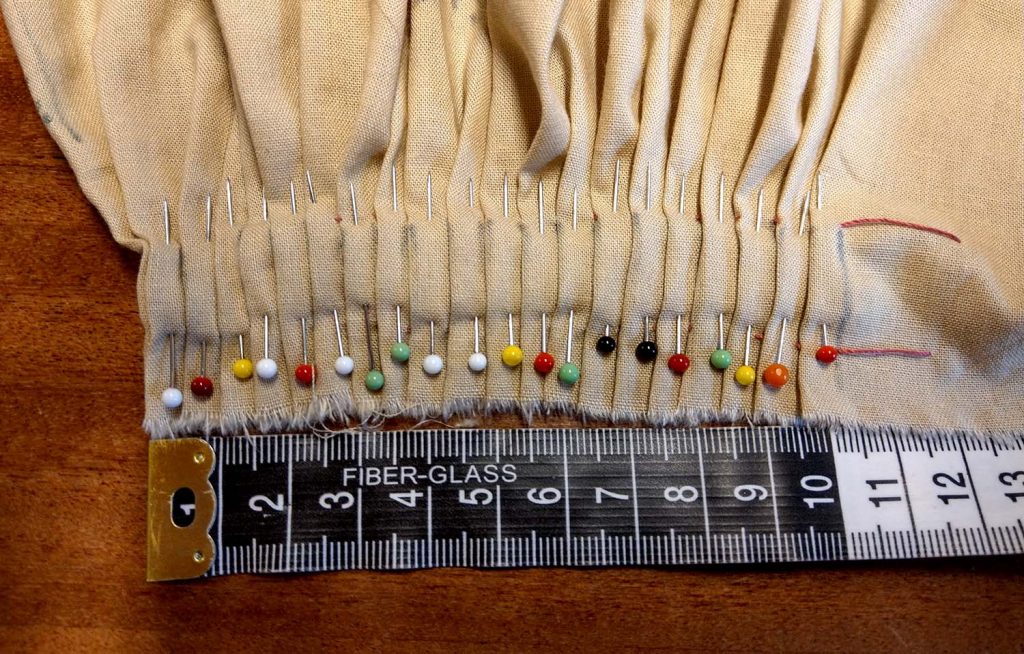
Turn around the skirt, now with the wrong side up, and secure the folds along the bottom gathering thread with loose stitches. Just catch the valley folds (mountain folds at the wrong fabric side).
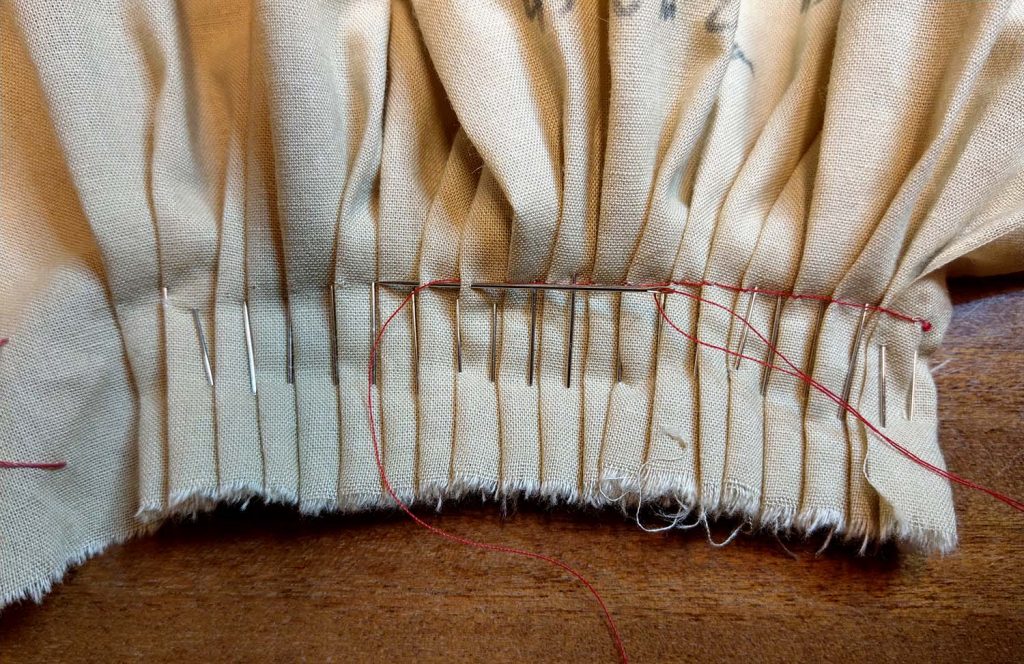
Turn around the skirt again, with the right side up now, and place the bodice or waistband on top along the seamline. Attach the skirt to the bodice/waistband with a pointed back stitch, fix every single fold while sewing.
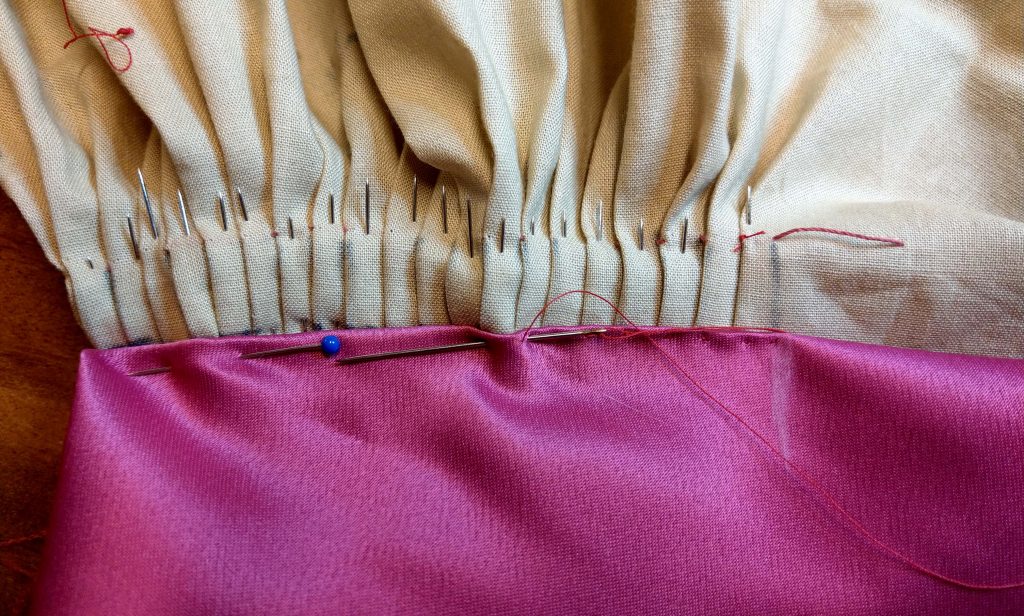
For 18th century gowns lay the extra width of 1” (2-3cm) into a matching fold at the front edge. The seam allowance at the top edge of the skirt will be left raw and pressed towards the skirt.
